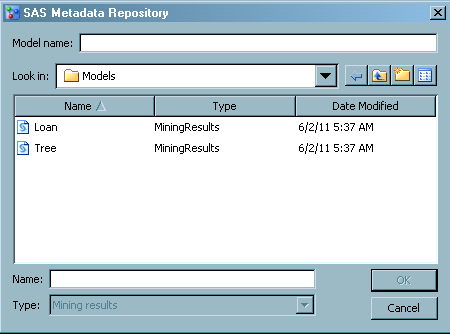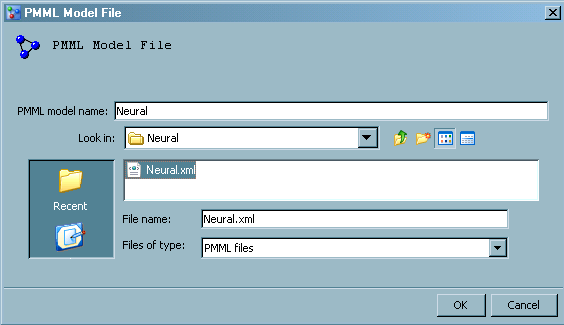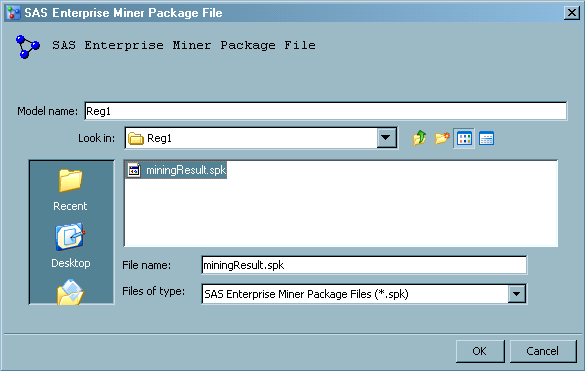Import Models
In this exercise you import models into SAS Model
Manager from the SAS Metadata Repository, a PMML model file, and a
SAS Enterprise Miner package file. Then you map the model variables.
Before you import the model, verify that the model type is identical
to the value of the project Model Function property, classification. For more information, see Create a New Project.
Import Models from a SAS Metadata Repository
If your SAS Enterprise
Miner 5.1 (or later) model files are registered in the SAS Metadata
Repository, then you can use SAS Model Manager to import the files.
If you do not have SAS Enterprise Miner models that have been registered
in the SAS Metadata Repository, you can review these steps.
Import PMML Models
PMML (Predictive Modeling
Markup Language) is an XML-based standard for representing data mining
results. PMML is designed to enable the sharing and deployment of
data mining results between vendor applications and across data management
systems. You can use SAS Model Manager to import PMML 3.1 (or later)
models that are produced by another software application, such as
SAS Enterprise Miner.
-
Navigate to the location of the folder that contains the PMML files. For this example, use
<drive:>\Tutorial3\Samples\Neural\
Import SAS Enterprise Miner Model Package Files
SAS Enterprise Miner
package files, or SPK files, contain complete model information. You
can import SAS Enterprise Miner models even if they are not registered
in the SAS Metadata Repository. For information about how to create
a package file, see the SAS Model Manager: User's Guide.
-
Navigate to the location of the folder that contains the SAS Enterprise Miner package files. For this example, use
<drive:>\Tutorial3\Samples\Reg1





